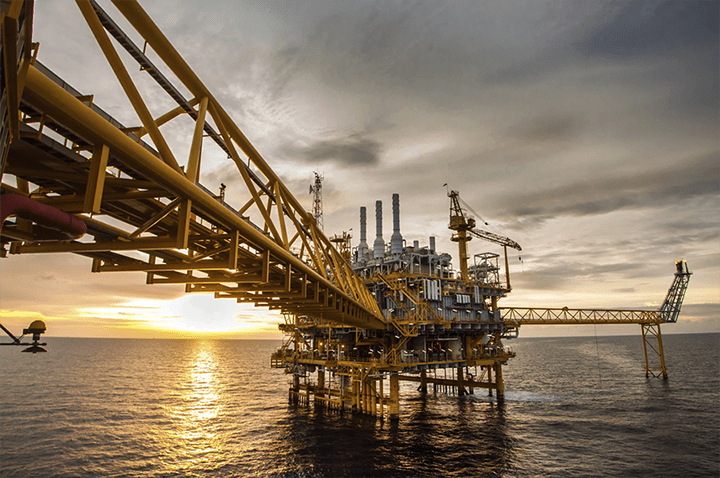As oil and gas demand surges, idle drilling rigs are increasingly being brought back into service. There is no doubt that this has been influenced by post pandemic demand, the Ukraine conflict, and resulting commitments by world leaders to find an alternative to Russian imports, but there are – and have long been – other considerations to factor in.
Recently, global rig utilization has been on the increase. As of the week of May, 16, 2022, West Africa oil rig utilization stood at around 81 percent, up from 62 percent in May 2021, putting it alongside the Gulf of Mexico’s current rate of 82 percent. Esgian recently reported that in the offshore rig market there has been a 12 percent increase in rig contracts signed and a 53 percent increase in backlog added in Q1 2022 compared to Q1 2022.
Across the entire Africa region, rig utilization is also growing. According to the latest Baker Hughes International Rig Count data, six new units were introduced, as demand picks back up again following the pandemic, and now fear over energy security in Europe adds a new factor.
In our recent conversations with oil and gas operators, it is very apparent that a surge in demand for drilling rigs will force the market to look toward drilling rigs that have been idle and require a process of reactivation, whether cold stacked or a newbuild that has never left the construction yard.
Typically, when a rig is reactivated, the complex equipment that has been idle needs to be “switched on” and tested rigorously to ensure it can still perform individually and as a system before being mobilized. The process of reactivation includes equipment overhaul, and sometimes repair and recertification. It is not a quick process considering the many different components and sub-components that need to be checked and tested on a rig. The rigs that drill the deepest wells in the deepest oceans can be challenging to reactivate, given the level of automation and electronics installed, compared to a conventional style land or shallow water jack-up rig.
A successful rig reactivation process involves detailed planning, multiple project teams working together, and an agile supply chain. As is the case with any reactivation, assessment of the equipment state needs to be carried out; not all rig equipment is left in perfect working order from the last time it was used. Rigs can lay idle for months and years; whereas, some equipment is put into preservation.
Post-reactivation, unplanned non-productive time, due to equipment failure, has the potential to create further expense and delay, sometimes into the millions. Thus, getting reactivation right does pay dividends, but it’s not always easy.
One of the issues is the loss of knowledge in the industry due to the past two market downturns. This isn’t limited only to onshore technical expertise; the availability of suitably experienced and skilled crews to man the rigs is a real issue and will only grow as rig utilization rises. The subsequent challenge is also ensuring crews are familiar with and competent to operate the complex systems installed in a safe and compliant manner.
But herein lies another problem: time.
There is a building backlog of rig contracts due to pent-up demand and now, with the fear over energy security in Europe, it wouldn’t be unthinkable that rig utilization will continue to build – despite that fact that, only a short time ago, the market was scrapping rigs that still had many years left in them.
There will no doubt be a need for more rigs to come out of the shipyards and to get back to work as operators look at their well stock and reassess their direction. In the midst of plug and abandonment (P&A) campaigns, talk of new well construction is being discussed in the boardrooms; however, the availability of rigs with the right specification will certainly cause a challenge for the market.
Scrapping has meant that availability of older offshore units has fallen, and they tended to be the best for P&A campaigns. If you are an operator now and you intend to P&A wells and drill new wells, you may end up with a higher specification rig than you need or contract multiple rigs. See the problem?
The time it takes to reactivate a rig, find a crew, and be operationally ready does take some months. Under the pressure and uncertainty of energy security, time could be precious.
It is becoming increasingly common for rigs to be taken to multiple new operating locations. An example is our work at ModuSpec, during the reactivation of a rig in Norway to operate in the United Kingdom, and then go to South Africa and then Mauritania.
Redeploying rigs across regions can create a compliance headache, if unfamiliar with the variations in legislation or the specifics of a country’s regulatory requirements. While the rig may meet the legislation for one area of operation, it may not necessarily be true for others. There is also the question of whether the crew will be willing to go with the rig to multiple locations or seek alternative work closer to home.
These complexities can be foreseen and ironed out. Having an independent party like ModuSpec to provide sound technical advice provides the benefit of our many years of technical expertise getting drilling rigs ready for operations. Bearing in mind time and budget pressures, engaging us can go a long way to mitigate these “unscripted” challenges, so that they do not lead to costly complications.
In the drive toward cleaner energy, many groups are seeing oil and gas in a negative stance. The reality is that the sector has been the lifeblood of the world’s energy for such a long time that turning to alternative sources will not be an instant or smooth process. The volatility of the energy supply, especially with the current conflict in Ukraine, creates an additional layer of complexity.
By understanding the reactivation challenges at play, and how to safely bring rigs back into operation, it is possible to ensure supply is not further compromised in today’s ever-changing landscape.
Headline photo courtesy of curraheeshutter, Getty Images.
Mark Watson is the operations manager for ModuSpec – Europe and Africa. He has 14+ years’ experience of the upstream oil and gas industry, specifically supporting the intake and assurance process of drilling rigs to commence operations safely and within compliance.
Oil and gas operations are commonly found in remote locations far from company headquarters. Now, it's possible to monitor pump operations, collate and analyze seismic data, and track employees around the world from almost anywhere. Whether employees are in the office or in the field, the internet and related applications enable a greater multidirectional flow of information – and control – than ever before.




